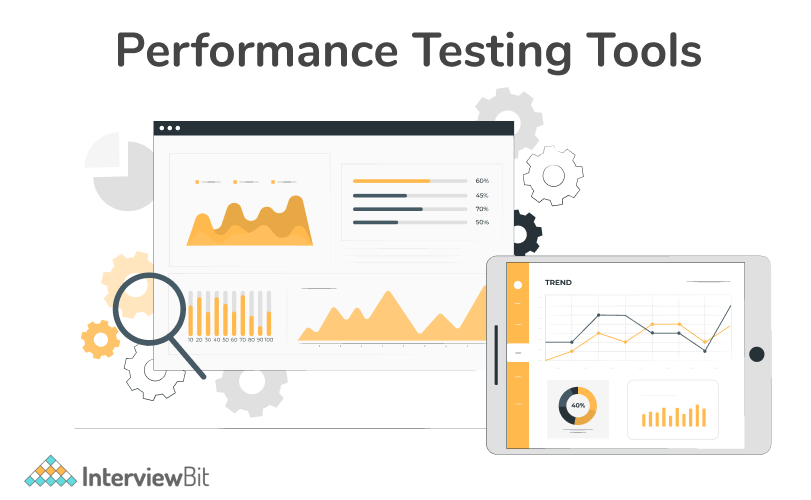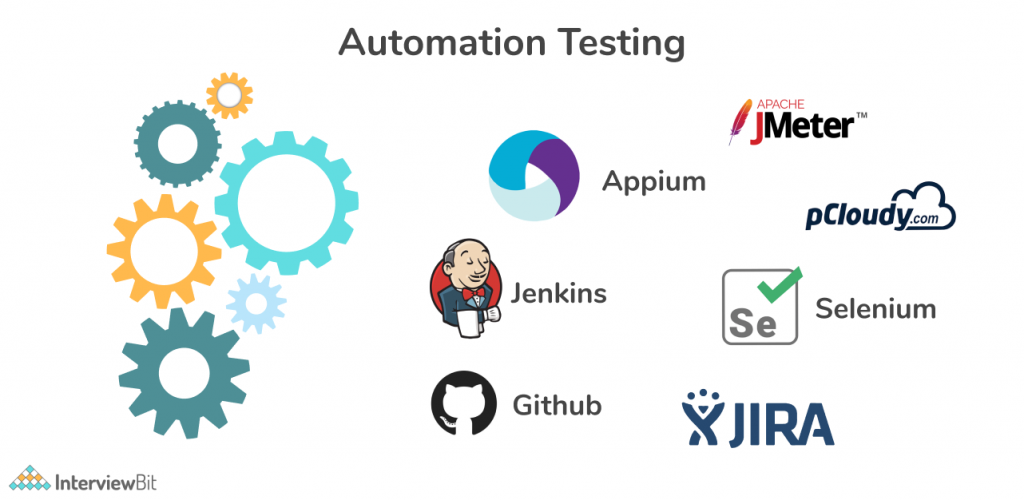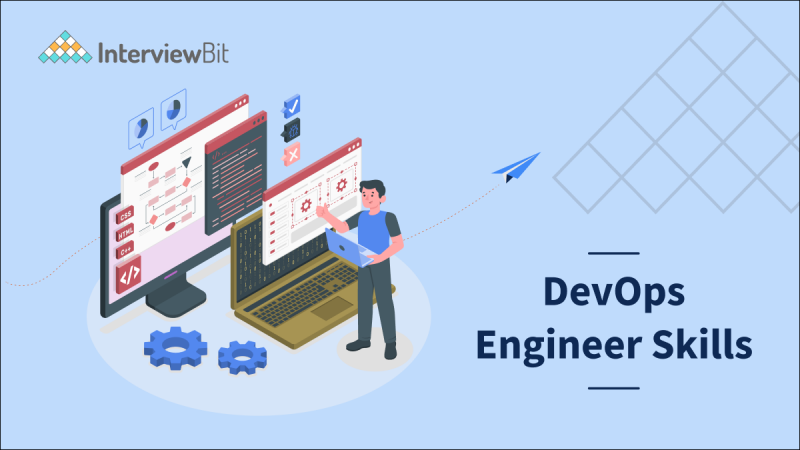DevOps is a trending term that has been floating around in the IT industry for a few years at a high pace. Companies are adopting it as a practice at a good rate. And to do the same, they are hiring the role for DevOps Engineers very actively, so this increases the requirement of DevOps Engineers in the industry. In this blog, we will discuss what is DevOps Engineer and what skills are required for this role.
A DevOps engineer is an IT individual who understands both development and operations. They’re well-versed in common system architecture, provisioning, and management. DevOps engineers bridge the gap between the actions required to alter an application quickly and the chores required to keep it reliable. Experience with traditional developer toolsets and techniques, such as source control, giving and receiving code reviews, creating unit tests, and knowledge with agile principles, is a plus for a DevOps engineer. IT operations teams and development teams may have diverse talents and objectives, developers want to add new features to a program, while operations teams want to ensure that it remains stable after it is published, but both the teams work collectively to give a successful end product to the end-users. DevOps is all about bringing processes together and automating them, and DevOps experts are crucial in bringing code, application maintenance, and application administration together. All of these responsibilities necessitate a thorough understanding of not only development life cycles, but also DevOps culture, including its philosophy, methods, and tools.
DevOps Engineer Skills
Understanding of DevOps Tools:
DevOps has been adopted by various organizations at a rapid pace. It has become a culture of working on any project. It has become easy for the teams to manage their work effectively without any complicacy. There are tools that are responsible for making things happen. These tools ensure automation, transparency, and collaboration. They ease the way to effectively share the information and technical knowledge between the stakeholders and other business teams for effective product output to its end-users. We will discuss some of the most popular DevOps tools and frameworks that help engineers to fulfill their goals.
Confused about your next job?
- Version Control Tools:
Version control is a technique for keeping track of code changes. It helps software teams operate faster and smarter as development environments have increased. If something goes wrong, we can compare multiple versions of the code and go back to any prior version we desire. They’re extremely beneficial to DevOps teams, since they aid in reducing development time and increasing deployment success. Software tools exist to assist software teams in managing source code changes over time. A popular example of such tool is:
- Git: It is one of the widely used and open-source tools extensively used by the development teams. It plays a crucial role from college-level projects to software industry-level projects. It allows the developers to keep track of all the changes in the code that will avoid mishappenings that may occur in the future.
- Configuration management tools:
When a configuration platform is used to automate, monitor, design, and manage otherwise manual configuration procedures, this is known as configuration management. In DevOps systems, using Configuration Management is a must. Determining the status of each system is a crucial component of configuration management. Organizations may assure consistency across connected systems and boost productivity by coordinating these operations with a platform. As a result, firms may scale more easily without having to hire extra IT management personnel. Some popular tools are:
- Chef: It is an open-source framework that uses the master-agent model. This tool uses recipes that are written in Ruby to keep your infrastructure compliant and running. These recipes provide details about the series of resources that should be in a particular state.
- Puppet: It is an open-source tool used to automate, manage and deliver the software with platform independence. It uses declarative programming for configuration, server management, and deployment.
- Application performance monitoring tools:

APM stands for application performance management, also known as application performance monitoring. It is a critical component of DevOps, enables developers and stakeholders in operations projects to monitor and assess the backend of applications in real time. It enables companies to track if their IT environment fulfills performance criteria, uncover flaws and possible issues, and create faultless user experiences by closely monitoring IT resources. Some popular tools are:
- AppDynamics: The AppDynamics tool is useful for identifying and managing the functioning of applications in the cloud and on servers. It’s an APM tool that’s known for its powerful real-time performance visibility and code visibility. It works with Python,.NET, Java, PHP, C++, and Node.js, as well as AWS EC2, Microsoft Azure, Rackspace Cloud Servers, and other technologies.
- Prometheus: It is a community-driven open-source performance monitoring system. It’s monitoring software that can capture and process any purely numerical time series. It also allows you to monitor containers and set up alarms based on time series data.
- Server monitoring tools:
The process of gaining visibility into the activities on your servers, whether physical or virtual, is known as server monitoring. It’s sometimes referred to as resource or infrastructure monitoring. Servers are devices that store and process data that is made available on demand to other devices, applications, or users. It shows you how much RAM is being used, how much CPU is being used, and how much disc space is left. For cloud-based settings, it is useful for collecting data from virtual server systems. Some popular tools are:
- Splunk: This software platform is commonly used for real-time monitoring, analysis, and visualization of machine-generated data. It creates graphs, alerts, dashboards, and visualizations by capturing, indexing, and correlating real-time data in a searchable container. It troubleshoots your entire infrastructure, whether it’s physical, virtual, or cloud-based.
- Sensu: Sensu is a cutting-edge open-source monitoring solution. It’s a cloud-based service that helps businesses of all sizes collect and analyze performance data. It is written in Ruby. It is highly suited for today’s dynamic cloud infrastructure. Server performance, bandwidth monitoring, uptime monitoring, network resource management, and event logging are among its important features.
- Continuous Integration and deployment automation tools:
In current development methods and DevOps, the acronyms CI and CD are often employed. Continuous integration (CI) is a DevOps best practice in which developers integrate code changes into a central repository where automated builds and tests are executed. After the build step, continuous delivery extends continuous integration by automatically deploying all code changes to the testing and production environments. Some popular tools are:
- Jenkins: It is an open-source CI/CD platform for automating your release management lifecycle from start to finish. Jenkins has become one of the most important DevOps tools. Its web interface, which includes on-the-fly error checks and built-in assistance, makes it simple to set up and configure. It automates a series of steps that allow developers to build, test, and deploy software with confidence. Jenkins’ capabilities may be extended to many stages of the DevOps lifecycle thanks to a huge pool of plug-ins accessible in the Jenkins ecosystem.
- Bitbucket Pipelines: It is a continuous integration solution that’s built right into Bitbucket, Atlassian’s cloud version control system. If your project is already on Bitbucket, Bitbucket Pipelines provides a simple way to enable continuous integration. Based on a configuration file in your repository, it allows you to build, test, and even deploy your code automatically.
- Container Platforms:
Containers are an important part of many DevOps workflows. They are lightweight, may be used in a variety of environments, and are simple to move from one team to another. They contribute to cross-organizational collaboration in this way. Now, containerization is the process of putting a software component, along with its environment, dependencies, and configuration, into the container. This allows an application to be deployed reliably in any computer environment, whether on-premises or in the cloud.
- Docker: It is a lightweight technology that uses an integrated approach to simplify and expedite various activities in your SDLC. A docker container image is a self-contained, executable package that contains everything you need to run a program. For a variety of purposes, the packing format is standardized. Docker is used by developers to create, test, and collaborate. Its main benefit is that it effectively splits apps into containers, making them safer and transferrable.
- Kubernetes: It is an open-source container orchestration platform that automates container-based application deployment, management, scalability, networking, and availability. It allows developers to deploy containerized apps across Kubernetes clusters, which are groups of nodes.
- Test Automation tools:

The method of automatically examining and validating a software product, such as a web application, to ensure that it fulfils set quality standards for code style, functionality (business logic), and user experience is known as test automation. It reduces the amount of time that humans are involved in the testing process. It necessitates the use of automation tools and frameworks to create test scripts that verify an application’s functionality.
- Selenium: It is a free and open-source testing tool. It’s generally used to test web applications by automating them. Selenium WebDriver, Selenium IDE, Selenium Remote Control, Selenium client API, and Selenium Grid are the components of Selenium. It is an extremely adaptable and extendable platform. It works with a variety of operating systems, browsers, and programming languages, including Python, C#, Ruby, Java, JavaScript, PHP, and PERL.
- Katalon Studio: It’s a test automation tool based on the Selenium and Appium automation frameworks. Because it can generate and reuse UI test scripts without requiring any coding, the platform stands out for its versatility and ease of use. The tool supports an external Java library and uses Groovy as its scripting language.
Communication and Collaboration Skills:
The DevOps methodology is based on constant feedback and reaction loops. It will be impossible to build a DevOps pipeline that truly delivers value to end users without effective team communication. The main cultural feature of DevOps, which brings together Development and Operations teams, is collaboration. Teams may make rapid changes to an application while maintaining a stable and robust environment thanks to real-time feedback and communication.
One such popular tool for this is Slack. It is a collaboration and communication platform built by Slack Technologies in the United States, which offers a suite of features to help teams collaborate more effectively, including instant messaging, audio/video calls, and document sharing. Aside from group and individual chats, Slack has other appealing features such as inline replies, mobile compatibility, and connectivity with a variety of third-party services such as GitHub, Dropbox, and others.
Programming skills:
Engineers that work in DevOps have a distinct set of coding duties. Instead of specialising in a single scripting language, a DevOps engineer should be fluent in several. Python, Golang, Ruby, JavaScript, Perl, Java, Bash, PHP, and other languages are among them. These are the languages that are most appropriate for automating tasks. To replace manual operations, good coding abilities are required; even the tiniest fault might result in major problems later on. A DevOps engineer should be at ease authoring and debugging bugs in these languages, as well as in OS environments.
Cloud Computing Skills:
Cloud computing expertise is beneficial in almost every aspect of a successful DevOps operation. It allows for cooperation without the time-consuming process of emailing files back and forth between team members. It also allows teams to communicate from anywhere in the world without having to drive to the office every time something has to be changed.
You could say that cloud and DevOps are inextricably linked. The efficiency of one is directly influenced and influenced by the efficiency of the other. While the DevOps technique drives a process, the cloud facilitates it by providing the essential infrastructure for testing, deploying, and releasing code.
Security Skills:
The pace of risk frequently corresponds to the speed with which DevOps allows for deployment. While DevOps speeds up the development and deployment of software, it also introduces a slew of vulnerabilities since security teams can’t keep up with the faster cycle. This is where DevSecOps shines in terms of integrating security into the SDLC from the outset. Introducing DevOps before the IT department has developed security practices is a formula for catastrophe.
Proactiveness:
Proactiveness should be fostered by DevOps engineers. To start enjoying your job is inextricably tied to the workplace environment, which has an impact on your performance, productivity, and efficiency. And the more important an asset you are to the firm, the more significant results you deliver. As a DevOps engineer, you’ll have to master new tools, technologies, cloud solutions, and a whole lot more. You must address them ahead of time; else, you will gradually but inevitably become someone whose abilities are no longer required.
Conclusion
In this blog, we discussed the role of a DevOps engineer and how they facilitate their work to produce their final product to the end-users. We also discussed various tools used by the engineer that are helpful in their journey of development and operation process. Our software industry is actively giving space to the DevOps culture. It is helping them in business expansions. The need for DevOps engineers is increasing at a good rate, so the reader may opt for the role in the future by learning more about DevOps. Here are some of the other blogs that can be helpful for your journey to be a DevOps engineer.
- DevOps interview questions
- Roles and responsibilities of a DevOps engineer
- Salary structure of the DevOps engineer
FAQs
- What is DevOps salary?
The salary structure may vary with experience, location, skillset, and various other factors. The average salary of the DevOps engineer is between 6 LPA to 7 LPA. You may refer to this blog for more details.
- Does DevOps need Python?
You don’t need to know Python or any other programming language to work as a junior DevOps Engineer. However, you must be familiar with at least one scripting language, such as Python, Bash, PowerShell, or Ruby, and be able to write and debug smaller scripts in that language.
- Is DevOps a stressful job?
It is debatable. It’s no more difficult or less difficult than any other new style of functioning. Most people find change challenging; even when they desire to change, they must adapt their behavior patterns, attitudes, and routines, which takes time and effort.
- Does DevOps need coding?
Engineers that work in DevOps have a distinct set of coding duties. A DevOps engineer should be familiar with many scripting languages, such as Java, JavaScript, Ruby, Python, PHP, Bash, and others, rather than specializing in one.







 Join WhatsApp Group
Join WhatsApp Group


